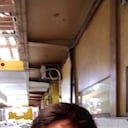Riga is the capital city of which European country?
Riga is the capital of Latvia and is home to 614,618 inhabitants (2021), which is a third of Latvia's population. Being significantly larger than other cities of Latvia, Riga is the country's primate city. It is also the largest city in the three Baltic states and is home to one tenth of the three Baltic states' combined population. The city lies on the Gulf of Riga at the mouth of the Daugava river where it meets the Baltic Sea.
Riga was founded in 1201 and is a former Hanseatic League member. During many centuries of war and changes of power in the Baltic, and despite demographic changes, the Baltic Germans in Riga had maintained a dominant position. By 1867, Riga's population was 42.9% German. Riga employed German as its official language of administration until the installation of Russian in 1891 as the official language in the Baltic provinces, as part of the policy of Russification of the non-Russian speaking territories of the Russian Empire.
Latvia, with Riga as its capital city, thus declared its independence on 18 November 1918.
By the end of World War II, Riga's historical centre was heavily damaged from constant bombing. After the war, huge efforts were made to reconstruct and renovate most of the famous buildings that had been part of the skyline of the city before the war.
Today Riga's historical centre is a UNESCO World Heritage Site, noted for its Art Nouveau/Jugendstil architecture and 19th century wooden architecture.
More Info:
en.wikipedia.org






